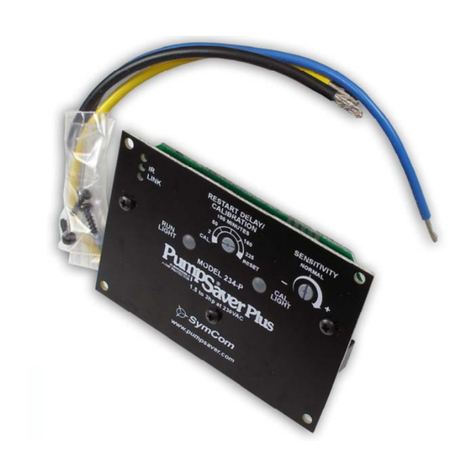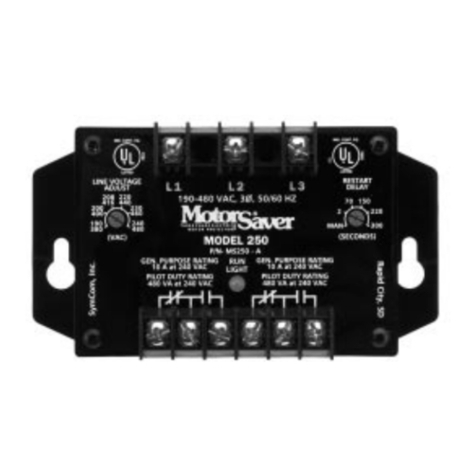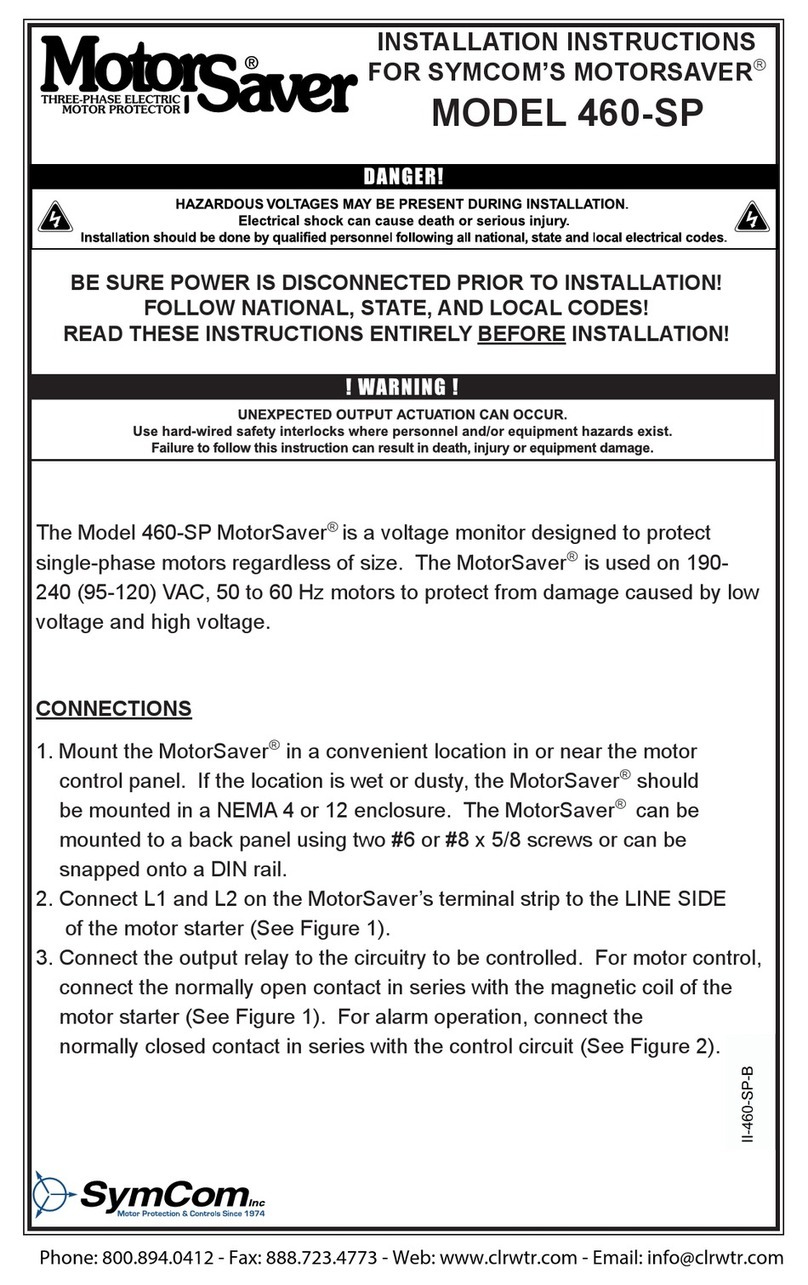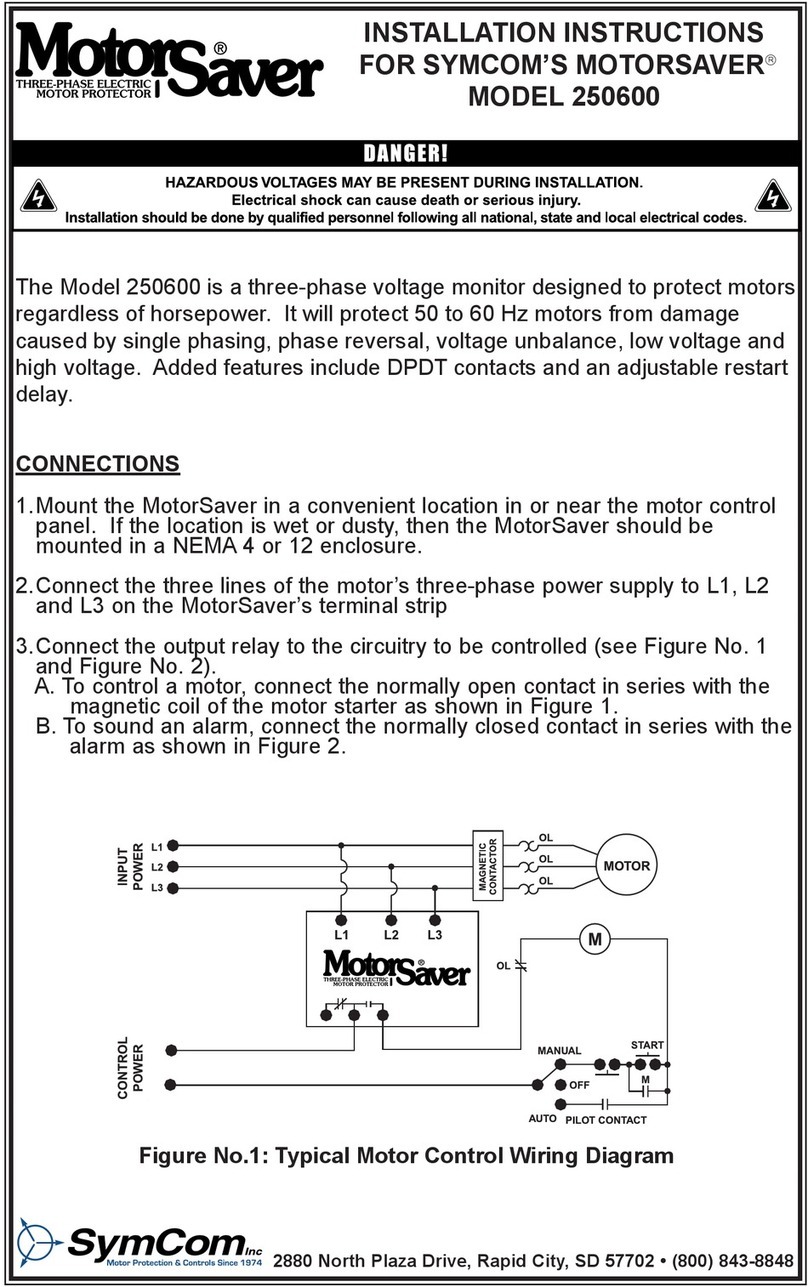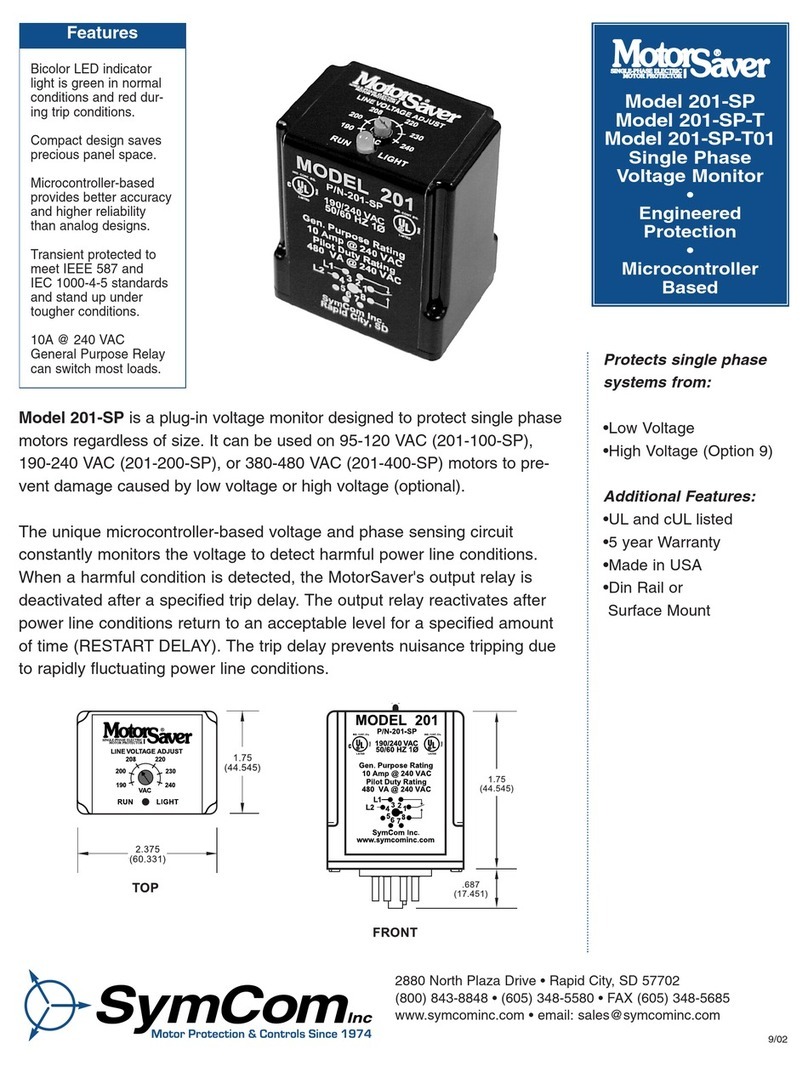
Line voltage adjustment: Rotate the
three-phase line voltage feeding the motor
2. Restart delay adjustment: Rotate the
desired position. The restart delay is the
acceptable voltage and the MotorSaver
closing its output contacts. For
compressor applications, the restart delay
should be set for the approximate time it
takes for the head pressure to bleed
off of the compressor. For other
applications, the restart delay is typically
set between 2 and 10 seconds.
3. Trip delay adjustment: Rotate the
adjustment to the desired
setting. This adjustment does not affect the
trip delay on phasing faults. Typically, the
trip delay adjustment is set between 1 and 5
seconds. In areas where voltage uctuations are frequent, the trip delay
adjustment may be set greater than 10 seconds.
4. Voltage unbalance adjustment: Rotate the
adjustment to the desired unbalance trip level. The NEMA MG1 standard
does not recommend operating a motor above 1% voltage unbalance without
the motor. The NEMA MG1 standard also recommends against
operating a motor above a 5% voltage unbalance under any circumstances.
SymCom recommends consulting the motor manufacturer for speci c
MODEL 460
190
200
416 440
230
240
380 480
400 460
208 220
Percent Unbalance = Maximum Deviation from the Average
Average x 100
Example: The measured line-to-line voltages are 203, 210, and 212.
Average = 203 + 210 + 212
3= 208.3
The maximum deviation from the average is the largest difference
between the average voltage (208.3) and any one voltage reading.
208.3 - 203 = 5.3 210 - 208.3 = 1.7 212 - 208.3 = 3.7
The maximum deviation from the average is 5.3.
5.3
208.3 x 100 = 2.5% Unbalance
Phone:
800.894.0412
-
Fax:
888.723.4773
-
Web:
www.clrwtr.com
-
Email:
[email protected]











